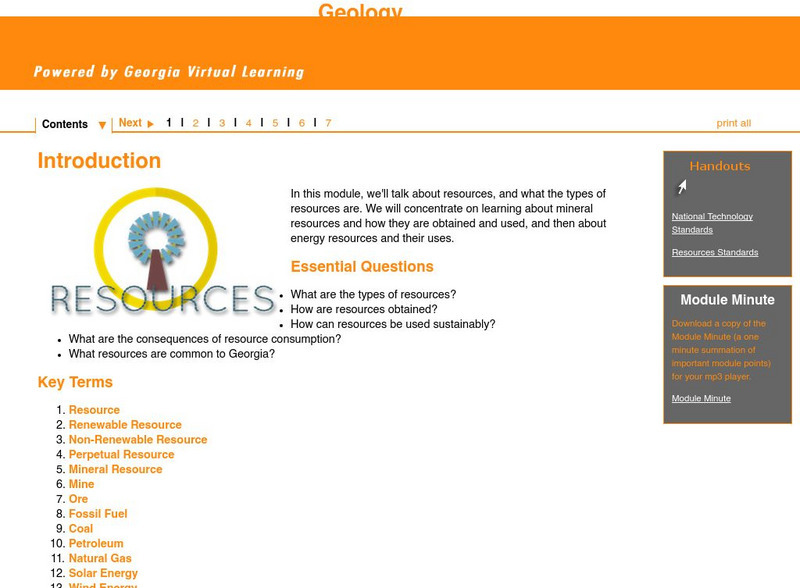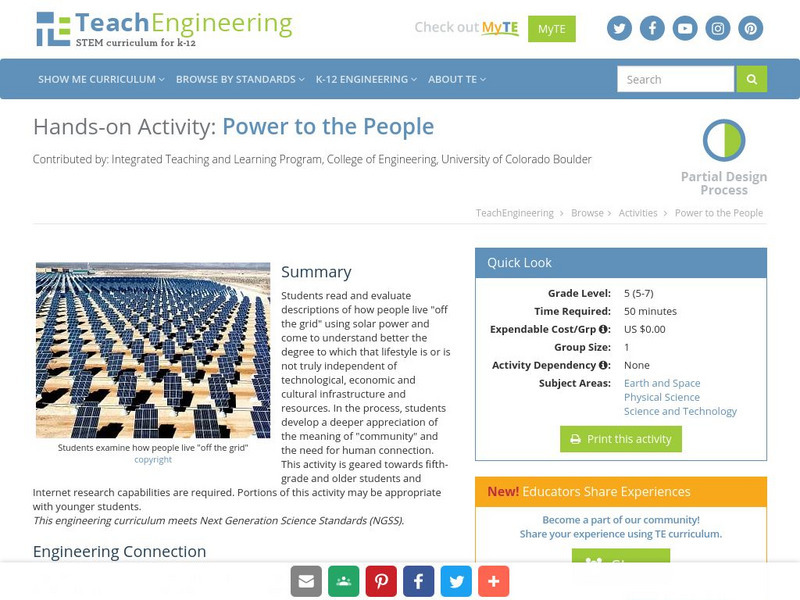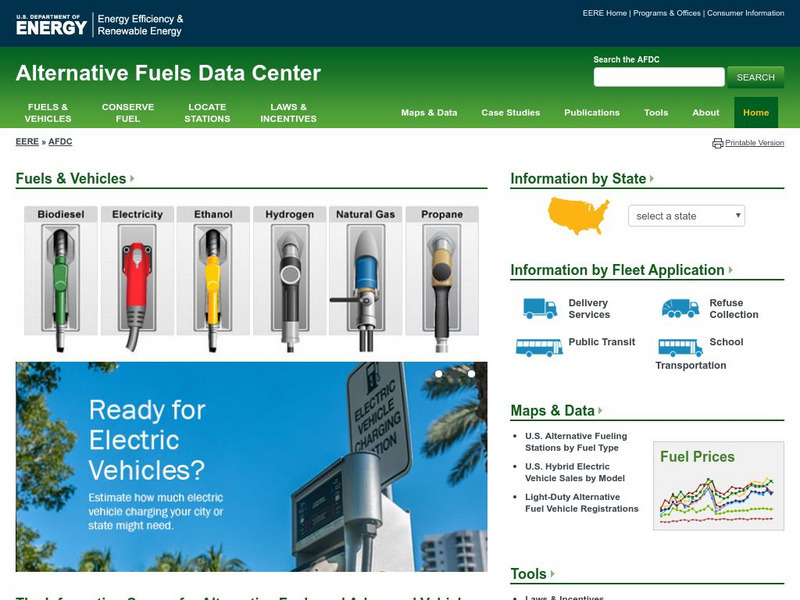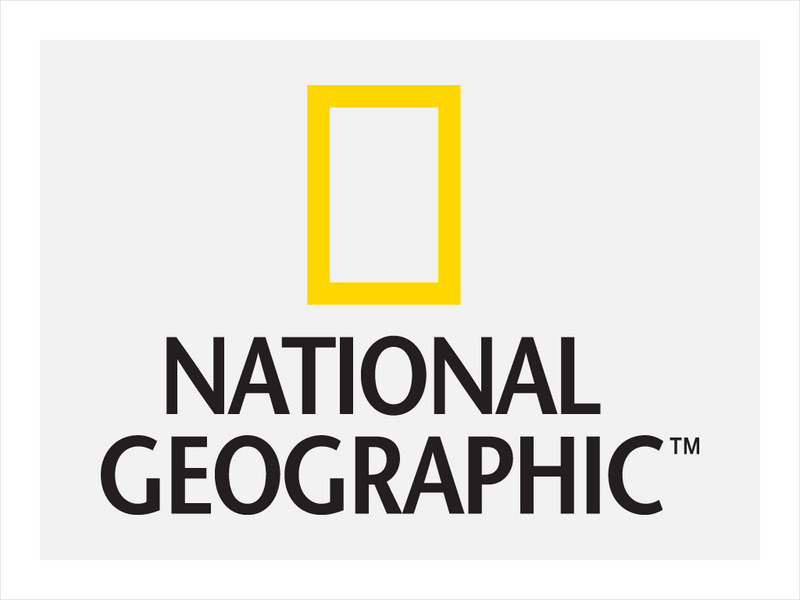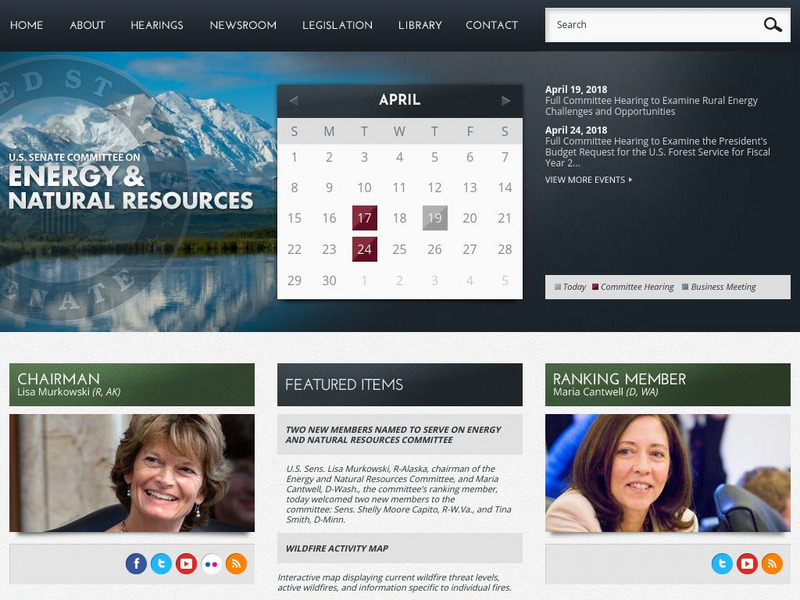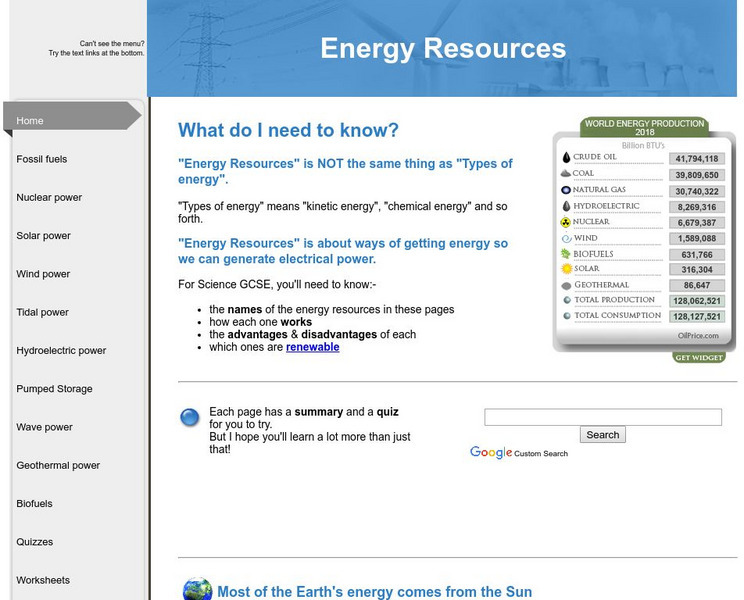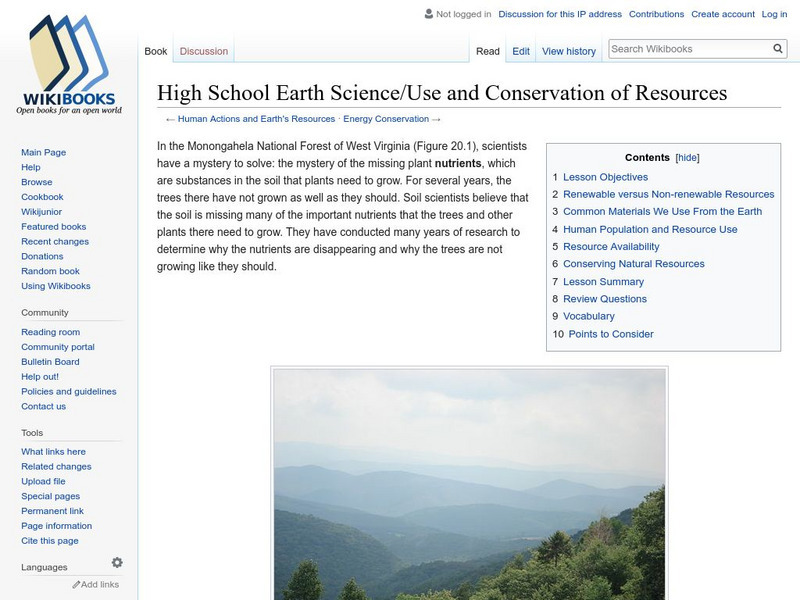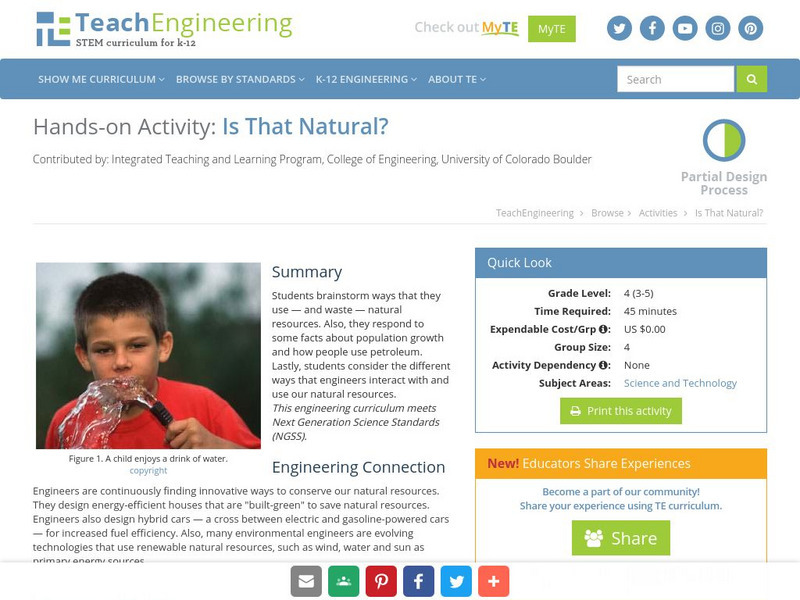Georgia Department of Education
Ga Virtual Learning: Human Impact
In this comprehensive interactive tutorial you will learn how we can reduce our carbon footprint by using alternate energy sources.
Georgia Department of Education
Ga Virtual Learning: Geology Resources
In this interactive tutorial you will learn about geological resources. Learn what the types of resources are and concentrate on learning about mineral resources and how they are obtained and used, and then about energy resources and...
TeachEngineering
Teach Engineering: Power to the People
Students read and evaluate descriptions of how people live "off the grid" using solar power and come to understand better the degree to which that lifestyle is or is not truly independent of technological, economic and cultural...
Annenberg Foundation
Annenberg Learner: The Habitable Planet: Energy Challenges
With this resource, users join investigators in the exploration of humans' use of and dependence on the many energy resources. Learn about new technologies such as carbon capture and sequestration as an alternative to reduce our carbon...
US Energy Information Administration
U.s. Eia Energy Kids: Energy Sources: Renewable
Find out what renewable energy is and the role it plays in meeting energy needs. Renewable energy sources include biomass, hydropower, geothermal, wind, and solar.
US Department of Energy
Eere: Alternative Fuels and Advanced Vehicles Data Center Program
The Alternative Fuels and Advanced Vehicles Data Center Program offers valuable information regarding the use of alternative fuels in the United States. This center is sponsored by the U.S. Department of Energy's Clean City action....
PBS
Pbs Nova: Design a Renewable Future
This interactive Lab investigates what energy is, how it can be converted into useful forms, and why some sources are running low. The Research Challenge allows students to design their own renewable energy systems to generate power in...
National Geographic
National Geographic: Evaluating Other Energy Sources
A comprehensive lesson where learners examine the different costs and benefits associated with renewable and nonrenewable sources of electricity. Includes a 22-question interactive module where they look at real-world data and images...
US Energy Information Administration
U.s. Eia Energy Kids: Energy Sources: Renewable
Learn about renewable energy sources including biomass, which includes biofuels, hydropower, geothermal, wind, and solar.
NASA
Nasa: Exploring Climate Change
Test your knowledge of energy and its role in Earth's climate system with these interactive quizzes.
State Energy Conservation Office-Texas
State Energy Conservation Office: Electricity From the Sun [Pdf]
Discusses forms of renewable energy that rely on the sun. For example, wind is created when solar energy heats the air, and biomass is solar energy that has been stored in plants.
TED Talks
Ted: Ted Ed: Biodiesel: The Afterlife of Oil
Natascia Radice describes the process of turning used cooking oil into useful biodiesel. [4:15]
TED Talks
Ted: Ted Ed: Planning for the End of Oil
As the world's attention focuses on the perils of oil exploration, we present Richard Sears' talk from early February 2010. Sears, an expert in developing new energy resources, talks about our inevitable and necessary move away from oil....
TED Talks
Ted: Ted Ed: How to Fly Around the World Without Fuel
Imagine if we could fly day and night using only solar energy. The expertly engineered Solar Impulse plane is flying around the world delivering a powerful message: clean technologies can achieve the seemingly impossible. Powered by a...
TED Talks
Ted: Ted Ed: How Do Solar Panels Work?
The Earth intercepts a lot of solar power: 173,000 terawatts. That's 10,000 times more power than the planet's population uses. So is it possible that one day the world could be completely reliant on solar energy? Richard Komp examines...
US Senate
U.s. Senate Committee on Energy and Natural Resources
The responsibilities of the Committee on Energy and Natural Resources oversees important legislation in Congress and has distinguished itself as among the most nonpartisan in the Senate.
Other
Energy Resources
Finding alternative energy sources is a challenge facing the leaders of today and tomorrow. Andy Darvill has created an impressive resource, summarizing various renewable and non-renewable energy resources.
Other
Temperate Forest Organization: Temperate Forest
Provides links to sites such as forestry, population, management, diversity, and fire. There are lesson plans, tours and educational links for teachers.
Other
Wikibooks: High School Earth Science/use and Conservation of Resources
Begins with a description of a case of missing plant nutrients that have been affecting Monongahela National Forest in West Virginia. Lists some of the benefits to humans of the natural resources in such a park. Then explains the...
Scholastic
Scholastic: Study Jams! Science: Energy, Light and Sound: Renewable Fuels
A slideshow and a short quiz on the different types of renewable energy sources.
Other
Wisconsin K 12 Energy Education Program (Keep)
The mission of KEEP is to improve energy education in Wisconsin's schools. It provides teachers access to resources, activities and web support for many hands-on lessons for all grade levels.
Other
Biology Discussion: Natural Resources: Depletion Reasons, Types and Conservation
Discusses how the the natural resources of the world are being depleted at an alarming rate, and that humans depend on them for their survival. Elaborates on four main causes of resource depletion, and initiatives that could help to...
TeachEngineering
Teach Engineering: Is That Natural?
Students will brainstorm ways that they use - and waste - natural resources. Also, they will respond to some facts about population growth and how people use petroleum. Lastly, students will consider the different ways that engineers...
TeachEngineering
Teach Engineering: Naturally Speaking
For this lesson, young scholars will identify the Earth's natural resources and classify them as renewable or non-renewable. They will simulate the distribution of resources and discuss the fairness and effectiveness of the distribution....



